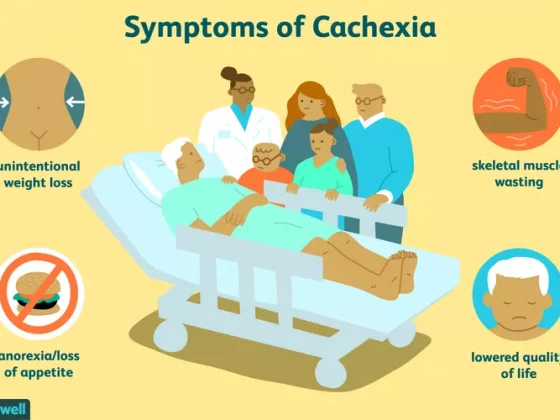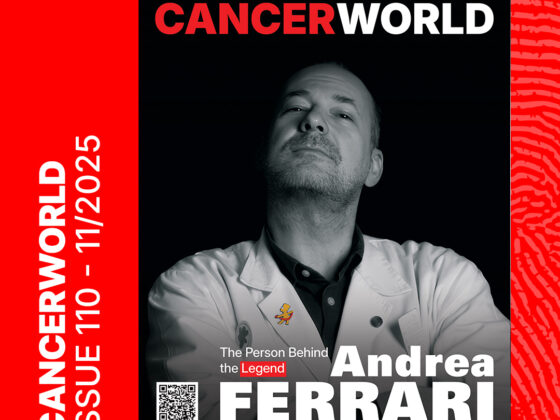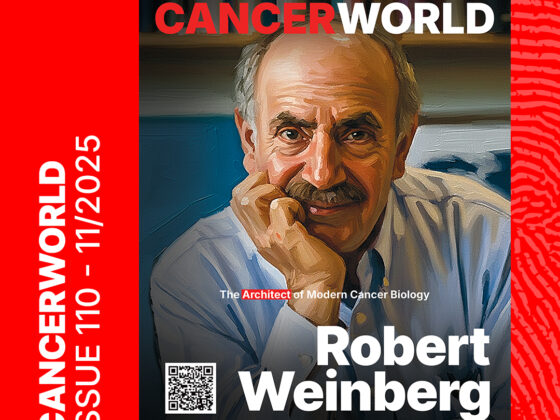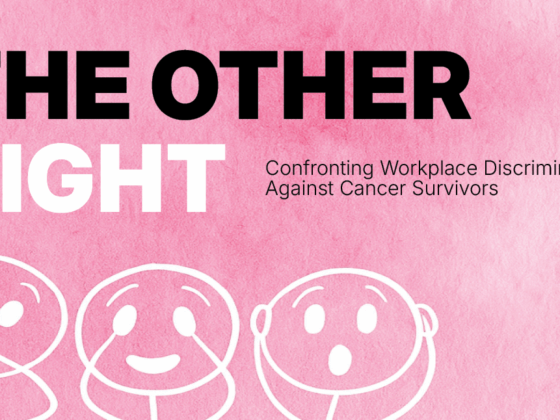Recent decades have seen major advances in how we treat cancer, leading to significant improvements in survival rates. For example, women who are diagnosed with early-stage breast cancer today are 66% less likely to die from the disease within five years of diagnosis than they were 20 years ago.
But this isn’t the case for all cancers. There is still a group of hard-to-treat tumours that are characterised by very poor prognosis, with five-year survival rates stuck below 25%. These include brain cancers such as glioblastoma, pancreatic along with liver, gall-bladder and bile-duct cancers, mesothelioma and some lung cancers, cancer of the oesophagus, as well as many other rarer forms of the disease. The survival rates for these cancers have stayed stubbornly low. Now clinicians are asking what we need to do to make progress in these areas – is it just a matter of more research funding or do we have the wrong strategies?
There are more virile forms of most cancers says Richard Sullivan, Director of the Institute of Cancer Policy (ICP) at King’s College London, and clinical director of Cancer Research UK between 1999 and 2008. “In some men, particularly younger men, who get prostate cancer it is a tiger… there’s some types of breast cancers which are really nasty.” But these are not typical of most prostate or breast cancers.
For those cancers with typically poor prognoses there are some common factors. Late-stage diagnosis is often one. “Pancreatic cancer is a disease that does not give many symptoms until it becomes advanced,” says Filippo de Braud, Director of Medical Oncology at the Istituto Nazionale dei Tumori in Milan. In brain tumours this can be compounded by difficulties in diagnosing them, “GP’s don’t see them that often,” says Simon Newman, Director of Research, at The Brain Tumour Charity, in the UK. On top of this, surgical options are often limited. “Removing your pancreas is going to cause a serious disruption to your life and brain surgery [will] as well,” says Sullivan. But de Braud points out that, even when they are treated in earlier stages, poor prognosis cancers are highly likely to recur after treatment.
“The unifying characteristic is that they’re very hard to get drugs to”
“The unifying characteristic is that they’re very hard to get drugs to,” says George Malliaras, a bioelectronics engineer at the University of Cambridge, who leads an interdisciplinary research collaboration in Targeted Delivery for Hard-to-Treat Cancers. Malliaras points out that the blood-brain barrier is impermeable to more than 98% of pharmaceuticals. “The drug currently used as the first line of chemotherapy for glioblastoma is temozolomide, not because it’s the best drug we have available, but it’s the drug that has 40% permeability through the blood-brain barrier,” he says. “There are better drugs that just cannot make it through.” A dense stroma that typically surrounds pancreatic cancers presents a similar barrier that hinders anti-cancer drugs from getting through. The situation is equivalent for the lungs, where there is a pulmonary barrier of cells and mucus.
Survival rates and trends in some hard-to-treat cancers
| 5-year survival rate (2017) | Average absolute change 2006–2017 | |
|---|---|---|
| Glioblastoma | 5.7% | 0.1 |
| Pancreas | 10.9% | 0.6 |
| Pleural mesothelioma | 11.5% | 0.3 |
| Gall bladder | 19.4% | 0.4 |
| Oesophagus | 19.9% | 0.4 |
| Liver and bile ducts | 20.3% | 0.7 |
| Lung/bronchus | 21.7% | 0.5 |

https://transcan.eu/funding/calls/joint-call-jtc-2022-.kl
Speeding progress in hard-to-treat cancers
More funding
One problem with developing treatments is a lack of engagement from the pharmaceutical industry in these trickier cancers. “Companies are there to return value to shareholders, and the bottom line is they’re not there to be innovative and creative,’ says Sullivan, “there’s not the incentive for companies to focus on these… it’s a wasteland for drug development.” de Braud believes the impetus needs to come from academia, “Academics do not have to follow the marketing rules.”
Lack of interest from the industry has led to calls for more academic funding for research into these poor-prognosis cancers. In 2022 the Lancet Oncology published a report from a Commission to address Europe’s cancer research challenges. They called it the European Groundshot – inspired by the US Cancer Moonshot initiative, launched in 2016 to accelerate scientific discovery in cancer research. Two key conclusions from that Commission were that there should be a 50% increase in funding by 2027 for high-mortality cancers including lung, pancreatic, bladder, oesophageal, stomach, colorectal and other rarer cancers, plus 50% more investment in radiation and surgical oncology development.
“It becomes the narrative that brain tumours are too hard, which then becomes a bit of a self-fulfilling prophecy”
“Going back historically, there’s been a lack of funding into [brain cancer] research,” says Newman, which then means researchers are less likely to start working in the area – particularly given that working on such hard-to-treat cancers is less likely to lead to success. “It becomes the narrative that brain tumours are too hard, which then becomes a bit of a self-fulfilling prophecy,” he argues.
Better-focused research
Sullivan agrees that there is a general imbalance in research funding for hard-to-treat cancers, but he says some of the fundamental biology being funded, looking at the biology of metastatic disease for example, will also play a role in treating poor prognosis cancers. But to see real progress in these cancers, Sullivan believes more research needs to be directed to specific disease areas, such as brain and pancreatic cancers. Newman’s charity has invested £30 million (US$40 million) in brain cancer research, and has tried to offer a variety of funding, from smaller awards for ‘blue skies’ research to larger collaborative programme grants that might validate new drug targets and mechanisms.
Cooperative, transdisciplinary groups
One thing that’s missing is good cooperative networks and teams of researchers that allow knowledge to be pooled, but also have space to fund individual talent, thinks Sullivan. “There are plenty of individuals and small groups that are wildly innovative and dream stuff out of the box. People forget that a lot of the developments in the biological understanding of lung cancer were done by individual, small groups.”
He also thinks we may be ‘missing a trick’ by not supporting more transdisciplinary approaches. There are pockets of this type of work. Malliaras’ collaboration received £10 million (US$1.3 million) from the UK’s Engineering and Physical Sciences Research Council, and involves engineers, chemists and clinicians, as well as input from patients, on the technology they are developing. The six-year collaboration plans to take three different technologies from the lab to first-in-human trials.
Translational research
What’s also missing is the type of funding that can translate an interesting concept in the lab to an actual treatment by an academic or a start-up company. Malliaras says the inability to fund this translational research creates a ‘valley of death’ for potential therapies. “Allowing academia to get into that space through appropriate funding mechanisms and, more importantly, appropriate facilities in academia that would give scale up at the quantity and quality needed to support clinical trials would be very important,” he argues.
“We’re looking to take validated targets and ideas and do a fairly ruthless development to get them almost ready for clinical trials”
The Brain Tumour Charity is also hoping to bridge that gap, and take the early research it funds all the way through to the clinic. It has now launched a funding programme specifically for translational research, which will offer £400,000 grants (US$525,000) over 18 months. “We’re looking to take validated targets and ideas and do a fairly ruthless development programme to get them almost ready for clinical trials.” Newman also points out that, if this kind of development falls to academics, they will need to develop their skill sets, and so are likely to need support to drive forward. Yet even so, “not all of it is going to work; when we get to the clinic, the failure rates go up,” he says.
Some innovations in the pipeline
The problem of translating academic research into treatments for poor-prognosis cancers is recognised by some of the big research funders. The EU’s TRANSCAN-3 programme, for instance, is funding highly innovative and ambitious collaborative projects in translational cancer research at European and international level, with 31 partners from 20 countries. In 2022 they opened a Joint Transnational Call focused on ‘Novel translational approaches to tackle the challenges of hard-to-treat cancers from early diagnosis to therapy’ (JTC 2022), and have now awarded €15.1 million (US$16.5 million) to 14 projects. These include CAR-T cell immunotherapies, using liver cancer in vitro ‘organoid’ models to identify new targets, and developing artificial intelligence tools for radiation optimisation in glioblastoma patients.
The projects funded as part of the international research collaboration in Targeted Delivery for Hard-to-Treat Cancers illustrate some of the novel approaches in the pipeline. Run by Malliaras at Cambridge, the collaboration also includes seven other UK universities: Imperial and UCL in London, as well as Glasgow, Birmingham, Nottingham, Liverpool and Strathclyde. The projects are focused on novel delivery methods for mesothelioma, pancreatic cancer and glioblastoma.
Malliaras’ own group are designing an implantable device to bypass the blood-brain barrier and deliver chemotherapy directly to glioblastoma tumours. The problem encountered infusing drugs into the brain is the limited volume within the cranium, which means the infused liquid tends to flow straight out. “We work with a device called an electrophoretic pump, where we bring the drug solution to the tumour, and there is a membrane that allows the drug to come out of the catheter, but not the solvent,” says Malliaras. “The drug is in the form of an ion, and through the application of an electric field, it can permeate the membrane,” he explains. They are working on a similar device for delivering drugs to the pancreas.
“The drug is in the form of an ion, and through the application of an electric field, it can permeate the membrane”
Another team is developing gels loaded with drugs that can be applied after resection of a brain tumour. This allows chemotherapy to be delivered directly to the margins where cancer cells may remain. “We have shown that this goes way further into the margin than any other technology,” says Malliaras. The gel is now being produced to GMP standards (the minimum standard that a medicines manufacturer must meet in their production processes) for clinical trials. The international research collaboration is also developing nanoparticles for localised drug delivery made from metal organic frameworks, which are highly porous materials able to hold large reservoirs of drug molecules including biologics.
de Braud highlights the coming wave of antibody-drug-conjugate (ADC) therapies, which are currently making a big impact, not least in breast cancer, and could well prove effective for treating poor-prognosis cancers. ADCs use antibodies that can specifically target cancer cells, attaching a payload of cytotoxic molecules. “They are binding with chemotherapeutic agents that usually are so toxic that they cannot be used for treatment of cancer,” says de Braud, but when used in this targeted way they can be effective and tolerated. The ADC enfortumab vedotin is already in use for bladder cancer says de Braud, and can be used to treat patients who are showing resistance to conventional chemotherapy.
In Milan, de Braud is also planning five clinical trials for peptide receptor radionuclide therapy (PRRT), and he thinks this could be useful for brain and pancreatic cancers too. The method can be described as ‘internal radiotherapy’. Patients are infused with high doses of a radionuclide attached to a synthetic peptide that is able to target cancer cells and the microenvironment. Lutathera, the first radiopharmaceutical approved by the EMA in 2017 and the FDA in 2018, can target a receptor often found in gastroenteropancreatic neuroendocrine tumours (also known as islet cell tumours). “We can first perform a diagnostic evaluation, a PET scan, with gallium or technetium [conjugated to the] peptide, to see if there are positive spots where we suppose there are tumour cells, and if there is a positivity there, we can then use the same peptide, but conjugated with an isotope that is able to kill tumour cell.” With Lutathera this is lutetium-177, which emits both β- and γ-radiation. A retrospective cohort study from 25 oncology centres carried out by de Braud and colleagues showed that upfront treatment with PRRT for patients with islet cell tumours has improved survival outcome compared to those first given chemotherapy or other targeted therapy.
Strategic gaps and challenges
While some innovative work is being funded, there are still questions around how we tackle these neglected areas.
In 2019, a number of major European cancer organisations and associations produced a Cancer Mission to do just this. Among the objectives it set was a doubling of survival for patients with intermediate- and poor-prognosis tumours; it also called for more independent and academic clinical research and more organisation and modes of cooperation between all involved – including better data sharing, which is still often problematic.
But Sullivan feels this did not go far enough towards providing an actual strategy. He would like to see government and philanthropic research funding targeted at poor- prognosis cancers. “There are specific areas where there needs to be a much harder focus, and actually sit down and work out the state of research in pancreatic across Europe, and what can and should we do in terms of cross-border support? How do we get major grants up and running in countries?”.
“They have failed in supporting the units to do the sort of early phase work that isn’t commercially viable”
“Nobody wants to talk about that, but you look at what’s going on in terms of research portfolios, in my view, there’s very little sign of strategy.” Instead, he finds public sector funding is following private sector models. “They’re just aping private; they’re aligning their portfolios with discovery science and standard biopharmaceuticals… they have failed in supporting the units to do the sort of early phase work that isn’t commercially viable.”
One hope is that genomics and precision medicine approaches can bring advances. But that also requires better access to whole genome sequencing, which Newman says is still very variable across the UK, and in some UK regions it is almost non-existent. Sullivan points out that we still need to make advances in our understanding of fundamental areas such as cell signalling and immunology. “It’s also stepping away, and understanding how the systems of cells interact and what the cellular matrices means for the spread of those cancers.”
Another set of challenges is around the clinical trials needed to test and compare treatments. This is not just about the complexity and time scale and administration involved in setting up a clinical trial, says Newman, “but then recruitment rates into those clinical trials, once you get them open.” Despite the urgent need for more trials, there is pressure for clinicians to get people on the current standard of care as quickly as possible, and they don’t necessarily have the time to sit down and have long conversations around which clinical trials may or may not be options. Failure rates for trials are also high, and Newman cautions, “in our desperation to have more trials, and every patient on a trial, we still need to ensure that quality control exists, that we don’t diminish those small odds even further.”
One area that could make a big difference to treating poor prognosis cancers is earlier diagnosis, and there is a large amount of work going on to improve our ability to do this. Multi-cancer liquid biopsies are already commercially available and allow a diagnosis to be made from fragments of tumour DNA that are found circulating in the blood.
Other type of markers are being developed too. This year a liquid biopsy that combines a microRNA signature and a well-known biomarker for pancreatic cancer demonstrated an accuracy of 97% for detecting stage I/II pancreatic ductal adenocarcinoma, the most common type of pancreatic cancer. Researchers from Notre Dame University, in Indiana also published a method for diagnosing glioblastomas from a blood test in less than an hour, based on electrokinetic technology that can detect epidermal growth factor receptors (EGFRs) found in extracellular vesicles, which are known to be overexpressed in glioblastoma.
But even with earlier diagnoses, questions remain over whether some cancers may simply be untreatable. “We are going to die somehow,” concedes de Braud. Sullivan agrees that there will likely be a proportion of cancers that cannot be cured. But he says there are still too many people who succumb to cancer in middle age, or more tragically in childhood.
And it’s important always to remember the cancers that once had poor prognosis that are now treatable. In the last decade melanoma has seen big survival improvements, with high cure rates in early stages. In 2022 a phase 2 trial showed that a sub-set of patients with resectable clinical stage III or oligometastatic stage IV melanoma, who were given a combination of immune checkpoint inhibitors nivolumab and relatlimab, were cancer free after two years. In February, the FDA approved a tumour-infiltrating lymphocyte (TIL) cell therapy lifileucel for melanoma patients who do not respond to other treatments, with more than 30% showing a response.
It’s important always to remember the cancers that once had poor prognosis that are now treatable
Newman is very positive about the likelihood of advances in treatments for brain tumours. Most recently, a combination of the targeted drugs dabrafenib and trametinib was approved for treating children with gliomas carrying a mutated BRAF oncogene. After surgery, only 20% of children with high-grade gliomas respond to radiotherapy and chemotherapy. With the dabrafenib-trametinib combination, the response rate increased to 56%. “Progress is being made, given the right resource, the right strategy, and a big enough, dedicated workforce. We can get there,” says Newman, “But it will take concerted effort.”
de Braud is also optimistic, and believes it is just a matter of time. “I dedicated my life to cure cancer, so I strongly believe that we are going to have success.” “Research is very slow,” says Malliaras, “you just have to stick with it and keep pushing.”












